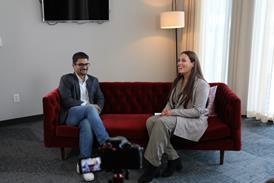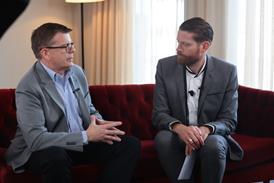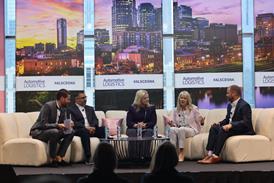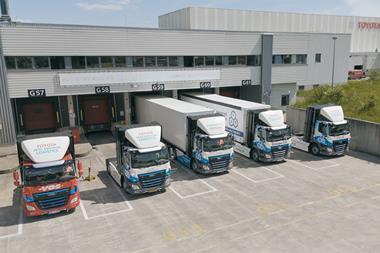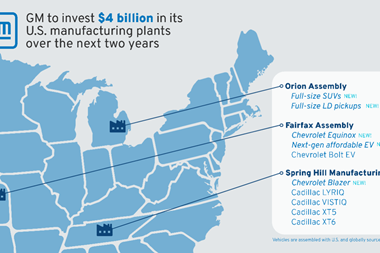 After six years basking in the glow of rising US sales, and now enjoying low fuel prices, Fiat Chrysler needs to improve productivity today before things change again, says Marc Brazeau, head of outbound and Mexico logistics in North America
After six years basking in the glow of rising US sales, and now enjoying low fuel prices, Fiat Chrysler needs to improve productivity today before things change again, says Marc Brazeau, head of outbound and Mexico logistics in North America
A team on a long winning streak can build momentum that lasts deep into a season. And yet, the inevitable loss that breaks it can be demoralising, perhaps even dangerous, especially if players focus on winning individual matches at any cost, rather than thinking long-term about the playoffs or cup finals.
The leadership at Fiat Chrysler Automobiles (FCA) is already planning how to manage such a change in fortunes, albeit one spread across years. Since 2010, the carmaker has ratcheted up more than 70 consecutive months of year-over-year sales growth in the US, tracing the arc of the recovery in vehicle sales and production right through the industry’s record year in 2015, and the first quarter of this year. The carmaker has also experienced good growth in Canada, where last year it was the country's top-selling car brand. The climb continues at the time of writing, including strong sales in January and February, but there is consensus that the company, and the market, may finally be approaching a summit.
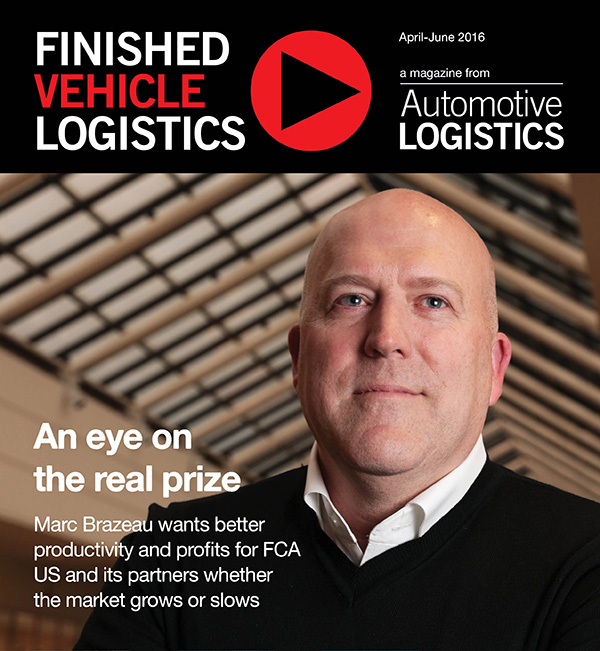
Sergio Marchionne, chief executive of FCA, said in an update of the carmaker’s business plan up to 2018 that he anticipated US sales would level off within the next year or so, and even decline modestly by the end of the decade.
There are many unknowns, of course, especially amid such a volatile global economy. For now, stock market and economic concerns may actually be holding back interest rate rises, and thus, somewhat ironically, continuing to support further automotive sales and leases. However, other carmakers and analysts share Marchionne’s assessment. PwC Autofacts, the production-forecasting consultancy, has pointed to 2018 as the year when US sales will decline amid a gentle correction. Mary Barra, chief executive officer for General Motors (and the partner Marchionne reportedly courted for a potential merger), also said US sales would likely “plateau” for the next several years, with limited, if any, room for volume growth.
While winning streaks garner headlines, they do not always translate into championship titles. For Marchionne, the real win will be to increase the company’s profits and pay down its debt, regardless of volumes or monthly sales gains. Luckily for him, FCA may be able to use one set of macroeconomic shifts to balance another.
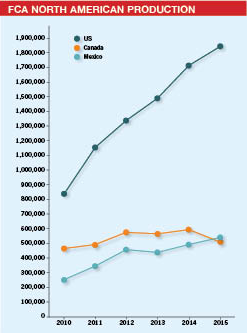 For example, while the collapse in oil prices is contributing to stock market routes, it has helped carmakers sell more of their higher-profit vehicles. To take advantage of this shift, FCA will tilt its North American production base even more towards Jeep SUVs and Ram trucks.
For example, while the collapse in oil prices is contributing to stock market routes, it has helped carmakers sell more of their higher-profit vehicles. To take advantage of this shift, FCA will tilt its North American production base even more towards Jeep SUVs and Ram trucks.
This changing dynamic in the market and in the commodities trade has implications for the company’s North American vehicle logistics. For the last few years, FCA and other OEMs in the region have been chasing capacity and space to meet demand across railways, yards and trucks. Meanwhile, there has been pressure on plants and supply chains as vehicle shipments outpace production plans. The carmaker’s four-year plan from 2014, for example, anticipated total US industry sales (including medium and heavy trucks) of 16.6m units in 2015; the actual number hit 18m (including 17.5m light vehicles).
Until recently, those variations in production were compounded by a booming energy sector, as the transport of crude oil and materials for shale gas extraction dominated rail transport. Together with network disruptions including extreme winter weather, this cocktail of volatility and limited capacity led to a swollen ‘ground count’ of finished vehicles – those waiting in plants for ramps for railcars to spirit them away – up to three times their average levels.
A new track to winning
This year, however, carmakers seems to be in a more fortuitous position, says Marc Brazeau, director of outbound and Mexico logistics for FCA US (the company formerly known as Chrysler Group, and the division responsible for all North American operations for the company). Operating costs have come down thanks to lower fuel prices, while vehicles are generally flowing more smoothly through origin and destination ramps, as railways have more traction and manpower available.
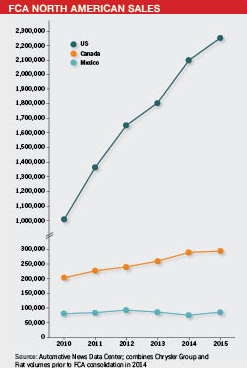 “I’m bullish on a strong 2016 for vehicle logistics [efficiency], although that is unfortunately partly because of how the energy sector is going for railroads,” says Brazeau. “As crude on rail has dropped, the congestion across railroad yards has declined considerably and I believe that’s resulted in an improvement in velocity for multilevel [railcars] that should carry over.”
“I’m bullish on a strong 2016 for vehicle logistics [efficiency], although that is unfortunately partly because of how the energy sector is going for railroads,” says Brazeau. “As crude on rail has dropped, the congestion across railroad yards has declined considerably and I believe that’s resulted in an improvement in velocity for multilevel [railcars] that should carry over.”
Brazeau, who got his start in automotive logistics working for Canadian Pacific Railway in the 1990s before joining then-DaimlerChrysler, is reminded of a bygone era when the automotive commodities were among the biggest service drivers for many class one railways. For the past couple of decades, those service priorities have competed with other growing commodities such as intermodal and, for much of the 21st century, the energy sector – until now.
“We’re beginning to see service levels among railroads that we last got 10-15 years ago,” he says.
However, Brazeau is not content to sit back and bask in the benefits of a commodity shift. While low fuel prices may be part of a ‘new normal’, he expects that the current pullback for rail freight will eventually reverse, as the cycles always do. Plus, FCA US will still face truck driver shortages, and tight space in ports and yards. Brazeau wants to make improvements “while we are making hay and the sun is shining”.
In this sense, Brazeau sees the prospect of a cooler market – the move from “hyper growth” to a “steady state”, as he calls it – as a potential boon for vehicle logistics at FCA US, even if it means an end to the winning sales streak. As plant output becomes more consistent, with fewer production holds, the carmaker can forecast and build truck and railcar loads more accurately, especially at rail origin and destination ramps.
He also thinks that the relatively stable period will allow FCA US to analyse the network more closely for possible improvements. Indeed, some changes and upgrades are already underway. For example, the carmaker recently added direct rail service from its Brampton, Ontario plant in Canada, while it has also extended its rail provision in western regions of the US by adding services from BNSF.
Brazeau is also exploring the regular use of short-sea shipping between the US and Mexico, and is considering the use of further US ports.
Furthermore, the company has been updating systems to improve visibility and network optimisation. Last year, FCA US implemented Rubicon VLS, a division of ICL Systems, as the dedicated third party manager of its North American network, and has integrated ICL’s VIN Track system to monitor vehicle flows from assembly lines or ports of entry, through to dealers or ports of exit.
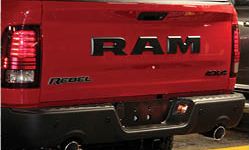 With low oil prices resulting in carmakers selling more of their higher-profit vehicles, FCA US will increasingly focus production on Jeep SUVs and Ram trucks
With low oil prices resulting in carmakers selling more of their higher-profit vehicles, FCA US will increasingly focus production on Jeep SUVs and Ram trucksFCA US continues to be a leader in the rollout of electronic proof of delivery (ePOD) in North America. In 2014, it was the first carmaker to require carriers to switch to paperless deliveries and damage reporting for final dealer handovers in the US and Canada. This year, it will roll out ePOD to dealers across Mexico, and is in the process of using the technology for the release of vehicles from rail ramps to road carriers.
Perhaps most critically, however, Brazeau wants to open the door further to working with other carmakers, whether for co-loading on trucks, developing standards or sharing data. He points to positive recent examples where FCA US came together with other brands and service providers at shared rail ramps to clear backlogs. The potential for more cross-OEM collaboration has “only scratched the surface”, he says.
Come together, right now
For Brazeau, the call for collaboration and transparency across OEMs for finished vehicle logistics is déjà vu rather than a revelation. Since he first started working in the railway sector in the 1990s, he has been an outspoken advocate of carmakers and service providers sharing more information and planning.
Later, after he joined DaimlerChrysler on his first tour at its Auburn Hills, Michigan, headquarters, Brazeau helped establish the carmaker’s system for tracking vehicle movements across North America, including the creation of Insight Network Logistics (INL), a third party division of Union Pacific that ran the carmaker’s North American network from 2001 up to last year when it was handed over to Rubicon VLS. INL was set up specifically to provide visibility across the carmaker’s handling and transport, and to allow for optimal transport loads across the network. That included, in principle at least, the potential to combine with other brands.
After Brazeau left the OEM in 2007, he carried out various consulting projects, including for the Automotive Industry Action Group, developing data standards and encouraging benchmarking in the outbound supply chain.
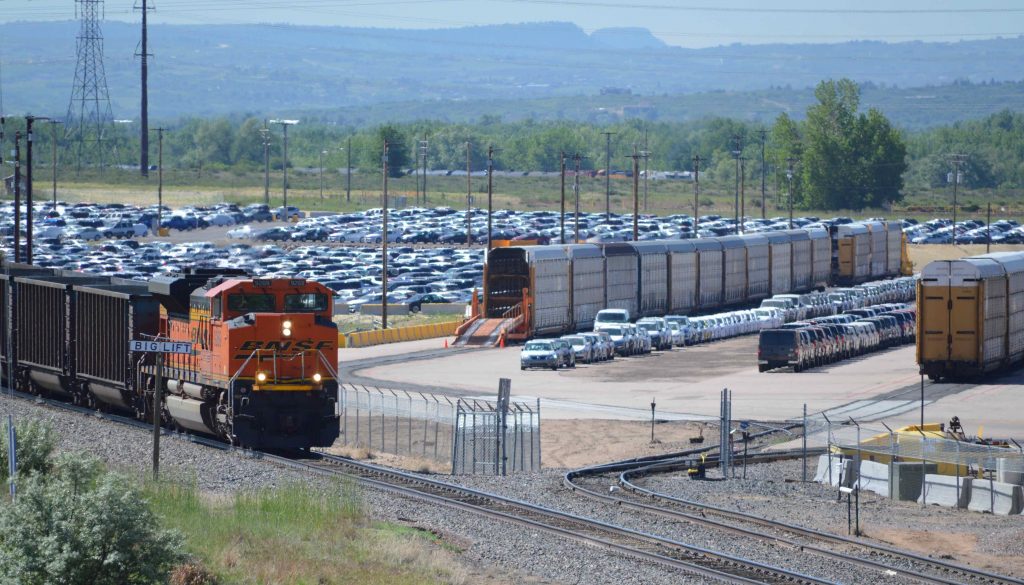 As of this year, FCA US has split its western rail ramps in the US between Union Pacific and BNSF in an effort to add more options and capacity
As of this year, FCA US has split its western rail ramps in the US between Union Pacific and BNSF in an effort to add more options and capacitySince returning to the sector last year, Brazeau says he has been struck by how little has changed in some areas. Despite the upheavals following the 2008-2009 crash, many logistics providers and their executives remain in place. Meanwhile, the major industry topics – shortages among railcars, truck drivers and port capacity – are still the main headaches.
He does, however, point to subtle but important changes, at least internally. FCA US now has a strong mix of veteran and new supply chain talent who are focused on generating innovative ideas and making better use of technology.
“We also have a very flexible workforce and a flatter organisation across the board with Fiat. There is a real aspect of collaboration and the best idea wins, which is a change,” he says.
The good news is that such collaboration is spreading beyond the walls of the Auburn Hills headquarters, not least because Brazeau is pushing for it and finding listeners at other carmakers. “I have made my philosophy clear over the last 20 years, as I don’t think finished vehicle logistics is a competitive advantage for any OEM,” he says. “In the late 1990s, I was something of a lone voice on that, but as times have changed and data visibility has become ubiquitous, I’m seeing more OEMs get behind that concept.”
Perhaps in part because of his experience away from the sector, Brazeau is something of a contrarian within vehicle logistics, an industry insider with an outsider’s view (or vice-versa). He wants to change the perennial focus on pushing carriers to buy more logistics assets, whether that be bilevel railcars, yards or trucks.
“I am not going to tell you to build a church for Easter Sunday. I understand the need for responsible capital spending, whether for a logistics provider or an OEM,” he says.
Outside Mexico, he thinks most of the investments in North American transport and handling space have already been made, and he is mostly comfortable with the general size of the rail fleet and its balance of multilevel equipment. Instead, he believes carmakers like FCA US should try to resolve chronic inefficiencies.
“My focus this year is productivity, productivity and productivity,” he says. “Our variability in manufacturing will not be what it was when we were chasing volume and sales. Instead, we need to chase down the fundamentals of our supply chains.”
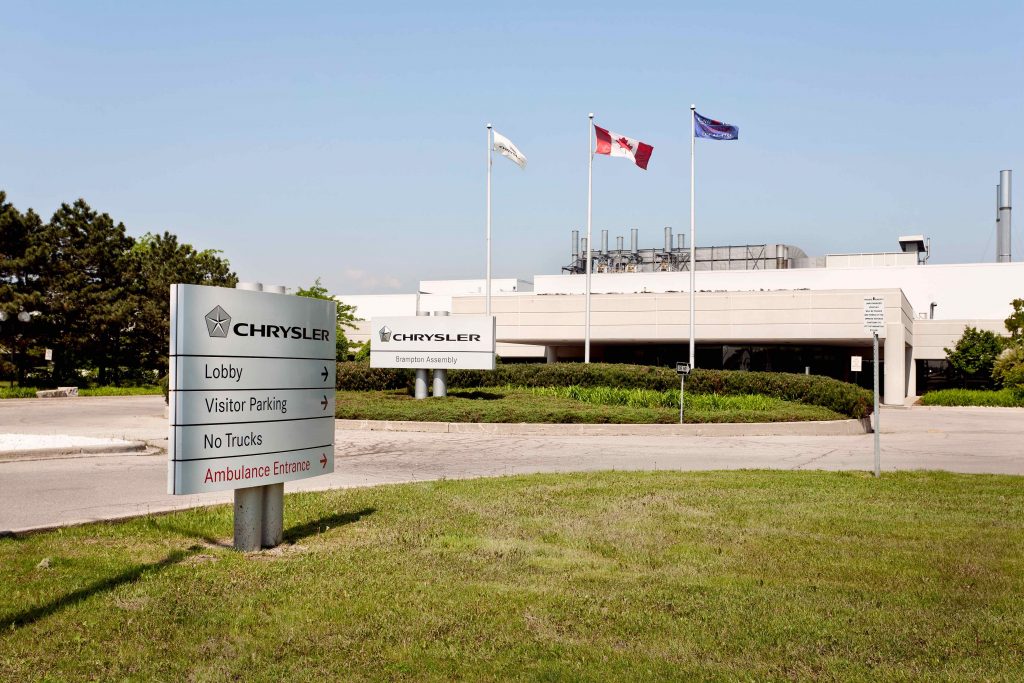 FCA has recently invested in a new yard to allow direct rail services from its Brampton, Ontario plant
FCA has recently invested in a new yard to allow direct rail services from its Brampton, Ontario plantCollaboration is an essential part of this process, and Brazeau has already seen proof. He points to one crowded rail ramp in the west of the US that had backlogs for months, which individual players had been unable to relieve. Instead, the three carmakers using the ramp came together with the railway and agreed on creative trip-leasing arrangements between the two carriers serving the ramp, along with supplemental lift and alternative storage options that allowed carriers to fill trucks to certain destinations faster than if they waited for the “perfect load” from each carmaker individually, says Brazeau.
The arrangement required an active approach from OEMs, which Brazeau was happy for FCA US to lead. “Collectively, we were getting on the phone every day to work with the carriers and build loads between each brand, and mutually agree on our path forward. As a result, we were able to get the ramp and pipeline back into shape in five weeks.
“It was a great open and collaborative approach to solving a problem relatively quickly.”
According to Brazeau, the critical component was the OEMs’ willingness to share individual data on their ground count of vehicles and destinations – information that they and the railways hadn’t previously made public.
“The truth is that we won’t be successful if we continue to isolate each shipper individually at a given ramp when trying to solve these throughput challenges. We must work collectively as an industry,” Brazeau says.
Sharing what you can see
The move towards greater collaboration in vehicle logistics is overdue as far as Brazeau is concerned. In North America, OEMs already share most of the same providers among the seven class one railways, a similar base of 50-60 truck carriers, plus a handful of port processors and shipping lines. Working together to eliminate redundancy should be an easier task in this group than it would be for the general freight sector, where the pool of providers and facilities is harder to define.
In an industry increasingly built on scale to reduce redundant costs – an argument Sergio Marchionne continues to make in favour of further OEM consolidation – vehicle logistics appears to be an obvious area in which to join forces, especially since it is mostly invisible to consumers. Marchionne has even hinted that FCA could contract other OEMs to build its smaller vehicles, which would force logistics cooperation anyway.
However, the impetus for greater sharing is the result of another important change that Brazeau notes since returning to vehicle logistics. While the physical flow and handling of vehicles is not dramatically different, there has been a great expansion in the technology now available (if not completely in use) to provide visibility and transparency across the network. What started as a new concept and set of tools in 2001 with INL, for example, is now ubiquitous in the industry.
“There are many options to how we collect visibility and transparency, especially around electronic proof of delivery and the drive towards standards,” he says. “We now have this nexus between really robust location data and tools to analyse it.
 Recently, FCA has begun to work more with other carmakers at rail ramps to combine truckloads
Recently, FCA has begun to work more with other carmakers at rail ramps to combine truckloads“We are in an environment with a lot more transparency, whether we as OEMs, or as logistics providers, like it or not,” he adds. “And we can use that information to drive different collective behaviours.”
Brazeau wants to put that transparency to use, including using all the tools at his disposal to understand and engineer changes to the existing FCA US network more frequently than the company traditionally has. While he makes it clear that he is not looking for an overly disruptive approach to network planning, he sees scope for savings in increasing the frequency at which the carmaker looks to analyse and redesign the individual and collective components of the network.
“We are already analysing more frequently and investing in tools that will allow it more, but we haven’t put them into an actionable plan yet,” he says. “We are debating that internally and trying to engage with providers to optimise based on where conditions can help us all.
“The goal is to reduce inefficiencies in a manner that the OEM gains productivity improvements in the form of fewer touches and greater velocity, and gives the service providers the opportunity to improve their profit margins on accounts within the scope of their current contracts.”
Network opportunities
A glance at the FCA US network reveals an infrastructure that has been relatively stable, but where even small changes can make an important difference.
Rail transport represents around 70% of its distribution volume, a number that has not dramatically changed even with low fuel prices and more competitive trucking, says Brazeau. The company’s total use of truck is higher than other large OEMs in North America, in part because FCA has fewer origin yards for rail at its North American plants, and needs to build more truckloads to rail mixing centres, as well as from destination ramps.
This year, FCA US is using around 55 ramps in the US and ten in Canada (out of a total of about 105 automotive yards across the two countries), a small increase since it added service from BNSF in February. “We are separating our western ramps between UP and BNSF by adding some ramps and creating two sources of empty railcars for Mexico, which we think will improve overall network efficiency,” he says. “UP remains our largest rail partner.”
 FCA has begun to explore making more frequent changes to its logistics network than it traditionally has, although Marc Brazeau says that he does not want to disturb stability among logistics providers
FCA has begun to explore making more frequent changes to its logistics network than it traditionally has, although Marc Brazeau says that he does not want to disturb stability among logistics providersAlthough he is more focused on eliminating waste than adding capacity, Brazeau does not deny that some investment across the rail network is still necessary. Mexico still has few ramps outside assembly plants as well as ports that need further development. FCA US uses just three yards across Mexico, including its plants in Toluca and Saltillo.
He also points to some rail ramps – perhaps half a dozen across the US and Canada – that are simply too small. While railways are likely to argue that the yards don’t have enough trucks serving them, Brazeau intends to use the more stable production period to demonstrate that these facilities will require expansion no matter how many trucks serve them – unless he is proved wrong himself.
“This is the year where it will come to light one way or another, and we will be able to say we need reinvestment in either truck capacity or physical space.”
Brazeau also sees potential augmentations for the company’s port network in North America, both for internal regional flows as well as for global imports and exports. Although ro-ro shipping is handled as a global commodity by FCA’s purchasing team in Italy, Brazeau’s North American team is responsible for port and processor relationships across the region for imports and exports, as well as for regional short-sea lanes.
In recent years, North America has become a more active shipping market for FCA. Though the company’s US and Canadian plants have long exported Jeep and minivan products beyond North America, Jeep sales have grown steeply in both Europe and Asia in recent years. In 2015, exports from North America to the rest of the world were 220,000 units, below a peak in 2013, but still historically high. Deep-sea imports to North America, meanwhile, reached 120,000 units, propelled by the Italian-built Jeep Renegade and 500x, and the Serbia-built 500L, as well as premium brands. In the future, the further rollout of Alfa Romeo and other European-built products in the US could drive imports higher.
“We expect growth in both imports and exports, but what we’re starting to see for the first time is the prospect of more trade balance,” says Brazeau. “That means we may be able to consolidate volume into several main ports and to influence ports of call, knitting together global trade more efficiently.”
 Deep-sea volume may soon be supplemented by more short-sea shipping from FCA volumes built in Mexico. As of now, FCA’s standard export route for virtually all of its exports from Mexico to the US and Canada – volume that reached 434,500 units last year, according to the Mexican automotive association, AMIA – is by land. ProMaster vans built in Saltillo are sent to the US by truck, while the great majority of models from Saltillo and Toluca move by rail. Short-sea shipping has so far been used in the case of rail disruptions or capacity issues, a flow that can vary significantly.
Deep-sea volume may soon be supplemented by more short-sea shipping from FCA volumes built in Mexico. As of now, FCA’s standard export route for virtually all of its exports from Mexico to the US and Canada – volume that reached 434,500 units last year, according to the Mexican automotive association, AMIA – is by land. ProMaster vans built in Saltillo are sent to the US by truck, while the great majority of models from Saltillo and Toluca move by rail. Short-sea shipping has so far been used in the case of rail disruptions or capacity issues, a flow that can vary significantly.
However, Brazeau anticipates that FCA US will follow other OEMs in Mexico and eventually use short-sea shipping as a structured part of its distribution between Mexico and the rest of North America as the company seeks more options.
“We already have the flexibility to do that and we are looking at it with certain products. I think you will see us start using short-sea more up the west and east coast, as well as in the Gulf,” says Brazeau. “We are exploring lanes and services to contract over the next 18 months.”
FCA US currently has nine active ports (see map above). Its most significant volume is in Baltimore, Maryland, which handles both exports and imports. Looking ahead, Brazeau envisions establishing “anchor” ports on three coasts, including on the Pacific, where it already has large export volumes to Asia from Grays Harbor, Washington, as well as a Gulf port option in the US, where new terminals have recently opened in Texas (including in Freeport and Galveston) and in Florida.
Though Brazeau is not coy about his intention to use short-sea shipping, he notes that rail out of Mexico continues to work well and will likely remain the dominant flow northbound. While there have been issues over crews and service, much of that has been improved, he says. Brazeau has also been encouraged by the increased investments in border-crossing operations with Mexico made by UP, BNSF and Kansas City Southern. If railcar capacity keeps up with demand, its higher frequency compared to shipping should keep it the lower cost option for FCA US. However, without greater coordination across carmakers and railways, the allocation of empty equipment will remain an issue.
“Helping everyone to coordinate the flows of empty equipment on both sides of the border will be critical,” Brazeau says. “If we don’t have the right equipment in the right place, we will get shorted in Mexico and end up playing catch up with inventory sitting. That will turn short-sea shipping into a self-fulfilling prophecy.”
Winning with the seasons
Over the next few years, as technology connects more objects, people and information, Brazeau is hoping for a more connected vehicle logistics industry, both in the systems and equipment FCA US uses in the supply chain, as well as its communication with competitors and logistics providers.
On the technology front, the transition to Rubicon has been reasonably smooth, says Brazeau, despite how integral INL had been across the carmaker for 15 years, starting off on the assembly line and moving through to dealers. Brazeau has high regard for INL and its systems, even if the time was right for FCA US to try other options. He points to more automated processes, improved data granularity and systemised business intelligence tools that are now in place.
The growing use of ePOD for FCA US has also improved accuracy for tracking delivery timeliness, and helped resolve damage issues faster. It has also helped carriers get paid faster, since ePOD is the trigger for them to invoice FCA US. Further integration across North American dealers will be complete this year as ePOD is also rolled out in Mexico.
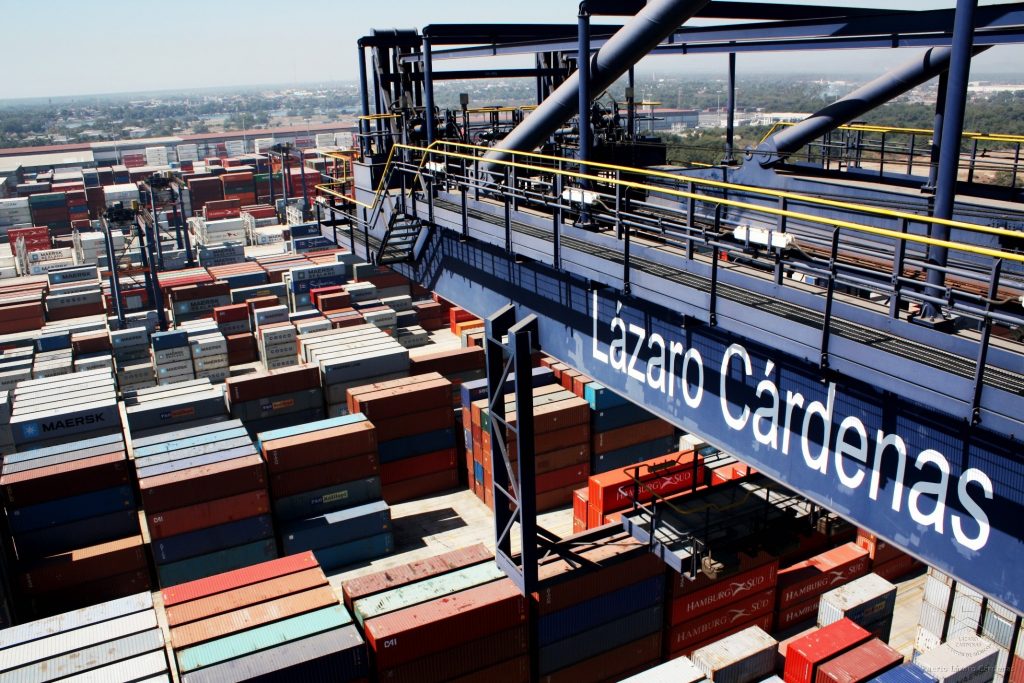 Along with strong exports from the US, the Italian-built Jeep Renegade is helping to increase deep-sea imports to North America and creating more of a trade balance across FCA’s port network in the region
Along with strong exports from the US, the Italian-built Jeep Renegade is helping to increase deep-sea imports to North America and creating more of a trade balance across FCA’s port network in the regionBrazeau also has a wish list for the future. He’d like to see more innovation around equipment, whether it might be a universal railcar that can convert between two and three levels more quickly than is possible today, or truck equipment that requires less time to load and secure vehicles than current trailers.
He would also like more flexibility on length and weight requirements for trucks. He points out that the recent extension for overhang and length for car carriers in the US has almost no impact on FCA US, since it came without additional weight allowance. Even the carmaker’s Windsor plant, which builds a mix of minivans that would fit on the longer length without going overweight, will not benefit since the Canadian government has yet to change its standards.
Such misalignments are one reason why Brazeau is so set on closer industry cooperation at all levels, from operational management, to shaping transport standards and regulations. He stresses that OEMs should focus on improvements in areas like rail and trucking while so many things are currently in their favour, and before existing inefficiencies are re-exposed, for example if the energy trade picks up again.
Brazeau believes the big wins in improving efficiency will come from OEMs working together to relieve capacity issues within existing network assets rather than by adding a load of new equipment to fleets. The rail ramp collaboration last year could be a template, for example, though Brazeau admits that such sharing gets more difficult at yards with more than two or three OEMs. However, FCA US has taken aspects of the trial to other locations, particularly crowded ramps on the east coast. While these didn’t involve trip leasing, the company engaged with the other brands to publish or share data.
“The visibility alone allowed us to get involved in little diversions or gave us options to get railcars or trucks back sooner,” he says.
Fundamentally, Brazeau wants providers to move away from thinking that the answer to any vehicle logistics issue is more and more capacity. He is looking for logistics companies to think like his company’s top management, concentrating more on profit than volume. The winning streaks of ever-growing volume for OEMs and providers are bound to end, whether next month or next year. However, Brazeau thinks that more focus on network visibility and sharing equipment could also help carriers to compensate for any drops in revenue with thicker margins.
“I want to work with providers to determine how we can help them go from 4% to 7% profit margin without doing much besides optimising or changing the way they work.” It may be easier said than done, but Brazeau thinks this profit focus will be the best way for all players to go on winning, even as the business cycles go on turning.
A new NAFTA organisation
 Marc Brazeau, FCA
Marc Brazeau, FCAMarc Brazeau joined FCA US in April 2015 as senior manager for outbound logistics, responsible for logistics purchasing and network operations for the US and Canada. It was somewhat of a role redux for Brazeau, who led DaimlerChrysler’s North American vehicle operations in the early 2000s before leaving the OEM in 2007.
While Brazeau returned to familiar territory, the ground has kept shifting. Not only has Fiat introduced new processes, but in January this year, Brazeau was promoted within a new management organisation for the North American region. The role held by William Cook, who had been head of North American logistics and customs, is now divided between Brazeau and Wendi Gentry Steunkel, while Cook has become head of supply chain management and logistics for Asia Pacific and China.
Brazeau now has an expanded director role, adding the full scope of inbound and outbound logistics and customs for Mexico to his US and Canada outbound management, along with logistics procurement for Mopar, the group’s aftermarket brand, and for international freight and services for North America. Gentry Steunkel now leads inbound and material logistics, as well as customs, for plants in the US and Canada.
The new roles consolidate areas under matrix functions, notably the entire outbound chain in North America, and the Mexican supply chain. FCA Auto Transport Services, the carmaker’s in-house fleet of 27 car-carrier trucks, based in Windsor, Canada, also reports to Brazeau as a business unit.
Though inbound, outbound and service parts remain operationally separate for the carmaker, Brazeau believes the combined structure allows for a more integrated view, better sharing of best practices and greater economies of scale. One example is for combining the freight spend for intermodal movements of parts with (the much larger) budget for outbound vehicle rail transport.
Brazeau also points to shared service points between the logistics areas, particularly around customs, finance and IT. Having one voice and one budget can have internal as well as external benefits, especially in obtaining clearance for investments.
“From a supply chain standpoint, we don’t want to be so separate that we are out planning individually for capital to improve IT systems or yard infrastructure that should be common between inbound and outbound, for example,” he says.






